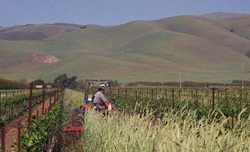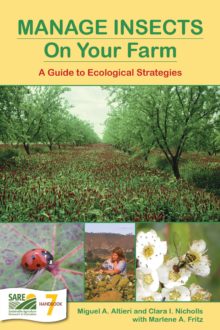
Putting It All Together
Introduction
Agroecology — the science that underlies sustainable farming — integrates the conservation of biodiversity with the production of food. It promotes diversity which in turn sustains a farm’s soil fertility, productivity and crop protection.
Innovative approaches that make agriculture both more sustainable and more productive are flourishing around the world. While trade-offs between agricultural productivity and biodiversity seem stark, exciting opportunities for synergy arise when you adopt one or more of the following strategies:
- Modify your soil, water and vegetative resource management by limiting external inputs and emphasizing organic matter accumulation, nutrient recycling, conservation and diversity.
- Replace agrichemical applications with more resource-efficient methods of managing nutrients and pest populations.
- Mimic natural ecosystems by adopting cover crops, polycultures and agroforestry in diversified designs that include useful trees, shrubs and perennial grasses.
- Conserve such reserves of biodiversity as vegetationally rich hedge-rows, forest patches and fallow fields.
- Develop habitat networks that connect farms with surrounding ecosystems, such as corridors that allow natural enemies and other beneficial biota to circulate into fields.
Different farming systems and agricultural settings call for different combinations of those key strategies. In intensive, larger-scale cropping systems, eliminating pesticides and providing habitat diversity around field borders and in corridors are likely to contribute most substantially to biodiversity. On smaller-scale farms, organic management — with crop rotations and diversified polyculture designs — may be more appropriate and effective. Generalizing is impossible: Every farm has its own particular features, and its own particular promise.
